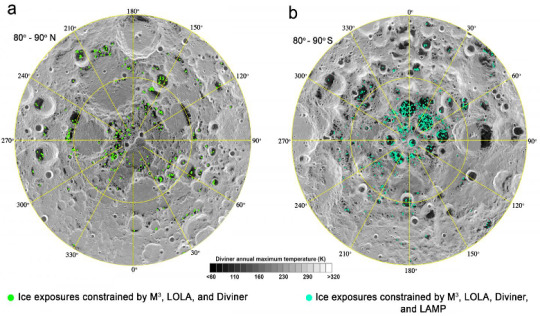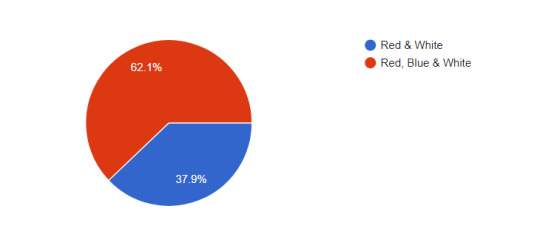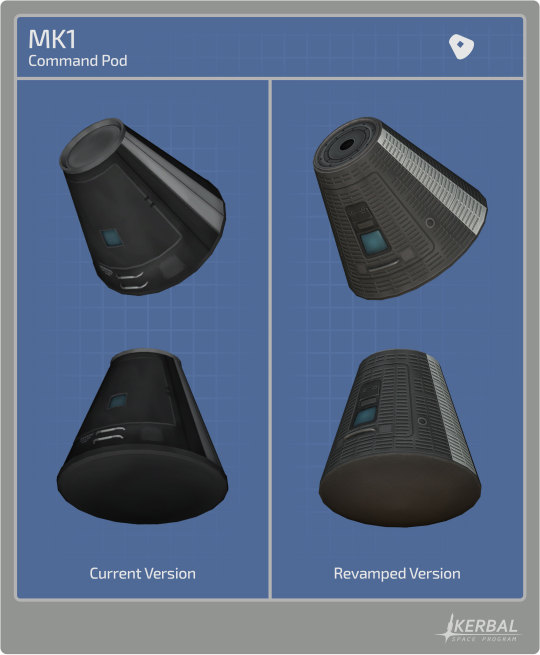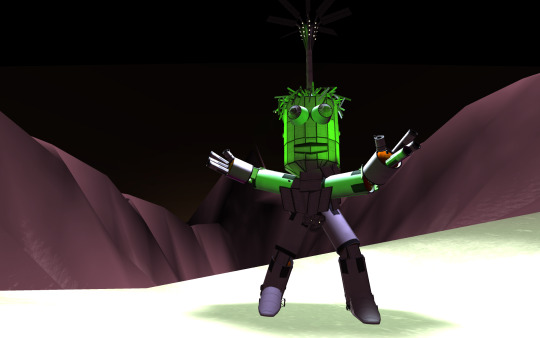#kerbal space program g testing
Explore tagged Tumblr posts
Text
KSP Weekly: Lunar Water

Welcome to KSP Weekly! A study published online this week in the journal Proceedings of the National Academy of Sciences provides direct and definitive evidence for surface-exposed water ice in the polar regions on the Moon.
The team of researchers — led by Shuai Li of the University of Hawaii and Brown University — peered at suspected icy patches using an instrument called the Moon Mineralogy Mapper (M3), which flew aboard Chandrayaan-1, India's first mission to the Moon, and provided the first mineralogical map of the lunar surface. The Moon Mineralogy Mapper used the near-infrared spectrum to pinpoint the signature activity of ice molecules interacting with infrared light. This helped the scientists to distinguish the frozen water from other types of ice or water in a different form — such as bound up in minerals — and they identified ice deposits dwelling in permanent shadows at the Moon's north and south poles.

The abundance and distribution of ice on the Moon are distinct from those on other airless bodies in the inner solar system such as Mercury and Ceres, which may be associated with the unique formation and evolution process of our Moon. The Moon's surface is continuously bombarded by meteorites and micrometeorites. Many, if not most, of these impactors contain water ice, and the lunar craters show that many of these were very large objects. Any ice which survived impact would be scattered over the lunar surface. Most would be quickly vaporized by sunlight and lost to space, but some would end up inside the permanently shadowed craters, either by directly entering the crater or migrating over the surface as randomly moving individual molecules which would reach the craters and freeze there. Once inside the crater, the ice would be relatively stable, so over time the ice would collect in these "cold traps," and be buried to some extent by meteoritic gardening. Correspondingly, most of the ice was found in surface craters that are never touched by direct sunlight, and where temperatures hover around minus 157 degrees Celsius.
This discovery has several implications. For instance, it can provide scientists with valuable clues about the composition and activity of the Moon and other icy bodies in the inner solar system. Beyond the scientifically intriguing aspects, deposits of ice on the Moon would have many practical aspects for future manned lunar exploration, as it provides significant impetus for future international landings in the polar regions to drill and return samples of this ice. Ice deposits in significant quantities on the Moon could also provide resources for future lunar bases, or could also potentially be an important resource for space travel; mining lunar ice and converting it to rocket fuel could extend the reach of future missions to deep space.
[Development news start here]
First of all, we want to thank everyone who participated in our poll which helped decide which color pattern the revamp of EVA Space Suits will have. We received many responses and there was a clear preference, so without further ado, here are the results:

The red, blue and white suits were clearly the favorite, and as such they are now part of the Kerbals’ wardrobe. While performing this poll, we also received tons of constructive feedback on the revamped EVA Space Suit. The art team is assessing the feedback and we will show the final version in a future update.

As part of the 1.5 Update agenda, we have also been looking at other parts that are getting a well-deserved refurbishment. One such parts is the MK1 Command Pod, which just got out of the VAB, fully revitalized and optimized. We're taking this opportunity to fix a few small issues with the original Mk1 pod. Attachment nodes will be adjusted so that the pod nests correctly on a 1.25m stack, and the top has been tweaked to be exactly 0.625m in diameter. The MK1 Pod will keep all its features and specifications, but with this new look it will make your first rockets look sleek and modern. Just as with the other parts we have shown off, the goal of this revamps isn’t to reinvent the wheel, but to give the part catalogue a more cohesive and sleek look, as well as to optimize the texture maps and the model geometry to reduce load times. Here is a GIFs to give you a full 3D look of the MK1 Pod.

Click here for the high res image.
Aside from art-related tasks, the team also started to work on improving and expanding the functionality of the Search Bar in the Mission Builder. Now whenever you make an inquiry, the Search Bar will check for matches on both the Toolbar and the Canvas. To facilitate the search process the system will create two lists; one for toolbar results and other for matches within the canvas. You will then be able to select your search results and it will highlight the matching nodes on the canvas and focus the camera on them. You can also drag a search result out onto the canvas and it will copy the existing node.
[KSP Vault] Last week, DasValdez got ULA systems engineer Patrick Moore to talk about the Parker Solar Probe mission and Delta IV Heavy rocket while he provided realistic flight commentary as he launched his own “Deltish IV” rocket carrying a “Parker Sorta Probe”, built using stock parts in Kerbal Space Program. Watch it here!
youtube
The Mission of the Week, Jeb’s Monument, a very challenging mission that will have you transporting a huge Jeb Statue towards Duna. Piloting, spacecraft design, docking, re-entry, precision landing, and efficiency, this mission will put your skills to the test! Get it here: https://bit.ly/2MIYNgN

Have you seen cool KSP-related content that you consider worth highlighting? Share it with us and help us give content creators more exposure. :)
Remember that you can also share and download missions on Curse, KerbalX, the KSP Forum and the KSP Steam Workshop.
That’s it for this week. Be sure to join us on our official forums, and don’t forget to follow us on Twitter and Facebook. Stay tuned for more exciting and upcoming news and development updates!
Happy launchings!
*Information Source:
(n.d.). Retrieved from https://nssdc.gsfc.nasa.gov/planetary/ice/ice_moon.html
David, L. (2018, August 22). Discovery of Water Ice on the Moon Thrills Lunar Scientists. Retrieved from https://www.space.com/41590-moon-water-ice-discovery-thrills-researchers.html
Li, S., Lucey, P. G., Milliken, R. E., Hayne, P. O., Williams, E. F., Hurley, D. M., & Elphic, R. C. (2018, August 15). Direct evidence of surface exposed water ice in the lunar polar regions. Retrieved from http://www.pnas.org/content/early/2018/08/14/1802345115
Luntz, S. (2018, August 21). Scientists Have Discovered Water Ice On The Surface Of The Moon. Retrieved from https://www.iflscience.com/space/scientists-discover-best-evidence-yet-for-water-ice-on-the-lunar-surface/
Weisberger, M. (2018, August 21). Ice on the Moon! Frozen Reserves Detected at the Poles in a Lunar First. Retrieved from https://www.livescience.com/63387-ice-on-the-moon.html
10 notes
·
View notes
Text
Valve secrets spill over—including Half-Life 3—in new Steam documentary app
The Final Hours of Half-Life: Alyx is now live on Steam as a $10 download, and it’s a phenomenal look at the underbelly of Valve video game development, told with a wealth of inside access and a host of multimedia goodies.
The project, as led by journalist Geoff Keighley, is a years-in-the-making look at Valve’s journey to release a new Half-Life game, complete with stories about other attempts that never got off the ground. Separated into 12 “chapters,” the app is predominately driven by Keighley’s text, full of interviews and quotes, and every page comes with embedded image galleries and pictures to drive each point home.
Get ready for a Borealis-load of Valve secrets
An interactive slider chart lets you dig through a few surprises in Valve’s game-development timeline, which Keighley’s story describes at great length.
A screenshot of the codenamed project “A.R.T.I.,” built in a brand-new, voxel-based engine that differed from Source 2.
Geoff Keighley
A screenshot of the codenamed project “A.R.T.I.,” built in a brand-new, voxel-based engine that differed from Source 2.
Geoff Keighley
A peek at the Shooter prototype developed for possible inclusion in Valve’s “The Lab” box of VR toys.
Geoff Keighley
An early prototype version of Half-Life: Alyx.
Geoff Keighley
Concept art for Half-Life: Alyx.
Geoff Keighley
The app includes a few fun interactive widgets, including full scans of characters from the game.
Valve / Geoff Keighley
You can also create and mix your own chain of headcrab sound effects.
Geoff Keighley
A look at how the G-Man was brought back to life.
Geoff Keighley
More G-Man insight.
Geoff Keighley
The app’s biggest dirt is arguably its confirmation of exactly what started and stopped within Valve on the way to getting Half-Life: Alyx out the door this March. That includes information on Half-Life 3—and it is a much firmer account of Valve’s history than what IGN reported earlier this year.
As described, however, this “HL3,” which began life in the early ’10s, would have been very different from what fans might have expected from a full-fledged Half-Life sequel. Inspired by Left 4 Dead, this non-VR version of Half-Life would have revolved around combat sequences through procedurally generated towers and buildings, chained together by crafted plot events.
A more plot-centric Half-Life project emerged within Valve in 2015, led in part by former series scribe Marc Laidlaw: a VR-exclusive game codenamed Borealis. (This followed the prototyping of a Half-Life arcade shooter, simply titled Shooter, that was made for possible inclusion in Valve’s VR toy kit The Lab, only to be canceled; we’ve reported on that one previously.)
Borealis would have taken place entirely on the boat of the same name while players “ricocheted in time back and forth” between various points in the Half-Life universe, including the series’ Seven Hour War. If that sounds familiar, its concept resembles the story Laidlaw eventually posted for fans, which many took to resemble his vision for a “Half-Life 3.” He left Valve shortly after the prototype failed to “gain traction,” Keighley writes.
Shortly before ground was broken on what became Half-Life: Alyx, Valve also had a “mini team” begin prototyping a Left 4 Dead sequel in late 2015, which was also shelved after “months of work.” (Its codename was “Hot Dog,” if you want to start digging through old Source Engine files for hints of it.) And other sections of the app talk about other canceled Valve games, including Left 4 Dead 3 (not to be confused with “Hot Dog”) and new, codenamed games like “A.R.T.I.” and “RPG.” (Today’s report also acknowledges a Half-Life 2: Episode 3 project that stalled when its team members shifted to help ship the first Left 4 Dead game.)
“The highest-paid blog post writers”
Keighley’s account of Valve’s history is blunt about the studio’s lack of significant game launches during the ’10s and about the issues they had in common—particularly that they all pulled the in-development Source 2 engine in different directions. “We sort of became the highest-paid blog post writers of all time,” longtime Valve writer Jay Pinkerton admits, while other staffers talk frankly about the studio’s reputation for spinning up multiple small projects and then watching them fall apart internally.
“We sort of had to collectively admit we were wrong on the premise that you will be happiest if you work on something you personally want to work on the most,” Valve developer Robin Walker tells Keighley, soundly rejecting the ethos that Valve has publicly carried as a torch for some time. The studio used a new Half-Life project as a way to focus the entire studio—even though, as we’ve previously reported, that project began life with more modest expectations in terms of length and content.
From there, Half-Life: Alyx‘s story picks up steam, intertwined with the studio’s vision for building VR hardware and experiences. The whole thing is a spoiler-filled exploration of how HL:A took shape, but most interesting is that the game’s biggest internal test ended with fellow Valve staffers giving a big thumbs-down to the ending. The production team sought permission to rebuild the narrative arc with a stunning ending, and Valve boss Gabe Newell greenlighted the shift, knowing it would delay HL:A‘s launch outside of the Valve Index hardware launch (which everyone had hoped would happen side-by-side).
And, yes, we finally have confirmation of what those two other VR games were that Newell bullishly announced in 2017: the aforementioned “A.R.T.I.” project, and something codenamed SimTrek, which Keighley only says was built in part by members of the original Kerbal Space Program team. Today’s news doesn’t clarify whether those projects may come back to life, however, and it doesn’t exactly say what may happen to In The Valley Of The Gods, a game absorbed as a Valve project when the studio acquired Campo Santo in 2018.
If you’re in desperate need to tour a famous building while locked up in quarantine, Geoff Keighley has your back in the form of this full-3D tour of Valve’s Bellevue, WA, headquarters.
Having been to Valve’s offices, I can tell you that quite a bit is left off limits; they operate multiple floors of office space, but we only get one floor, and a few rooms are entirely blocked out.
But it’s still fun to turn on “free-walk” mode and walk through its 3D recreation.
Geoff Keighley
A few hand-drawn art murals can be found in the tour, and they all have Sonic the Hedgehog in common for some reason. (Maybe because that game’s feature-length film launched one month before Half-Life: Alyx did.)
Geoff Keighley
I’m going to assume these whiteboards are covered in text that Keighley’s crew censored.
Geoff Keighley
If you’re a public visitor to Valve, you start your real-life tour here. Sadly, the app doesn’t let you go up the stairs to the cafeteria.
Geoff Keighley
The rest of the app is a doozy in terms of Valve history—including tantalizing hints about Valve’s vision for brain-connected hardware—so you’ll have to head to Keighley’s app, available now for $10 on Steam, to learn the rest and get access to exclusive galleries, prototype videos, and multimedia toys, including the above interactive tour of one floor of Valve’s headquarters in Bellevue, Washington. And while the app doesn’t end with a promise of more Half-Life games to come, it strongly suggests such a future: “We’re not afraid of Half-Life no more,” one Valve staffer suggests. (And whether that project may come in VR or not remains to be seen.)
Listing image by Geoff Keighley
Source link
قالب وردپرس
from World Wide News https://ift.tt/3fagxgd
1 note
·
View note